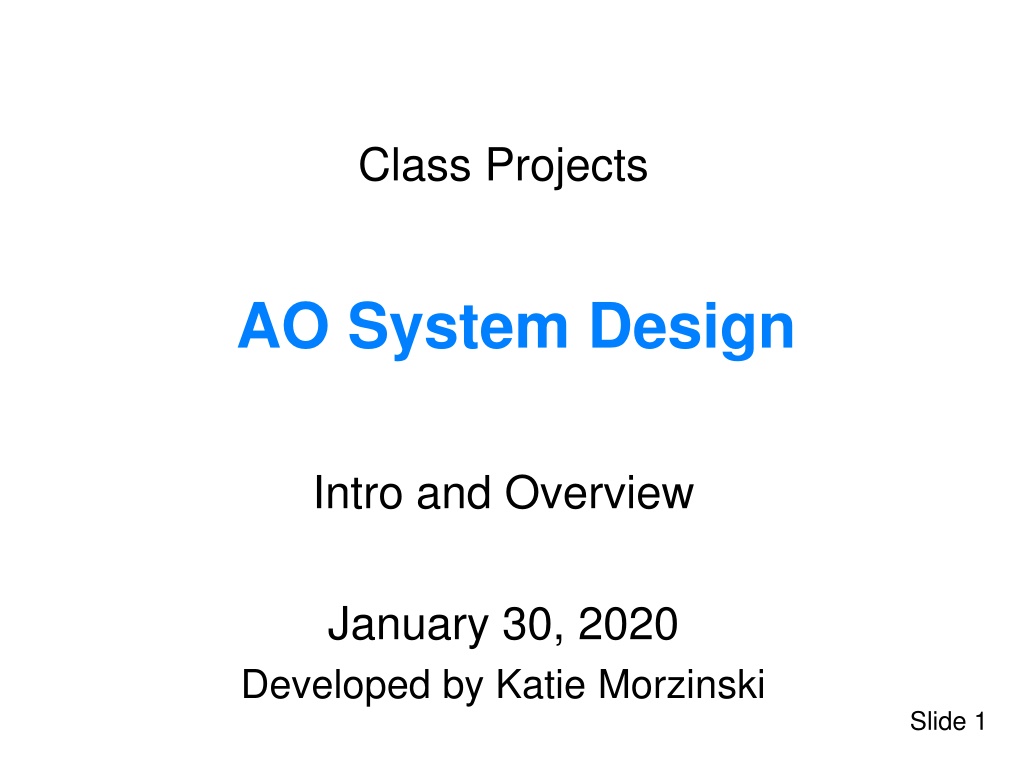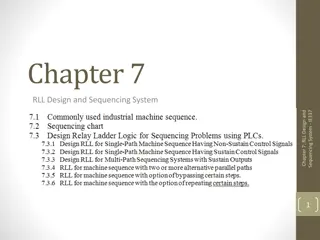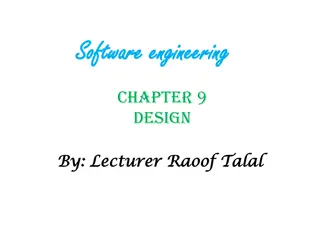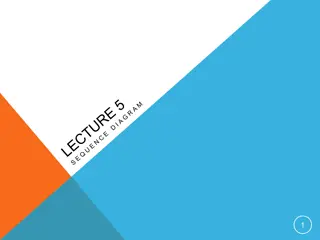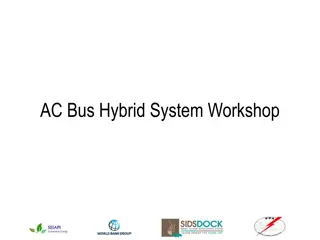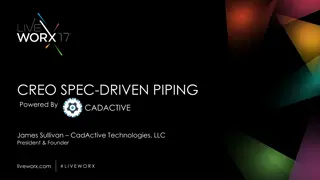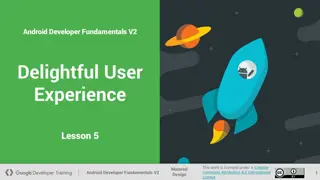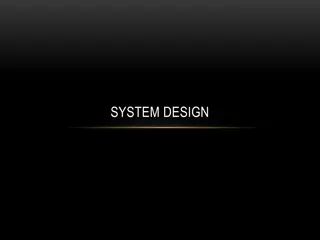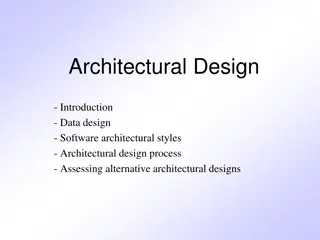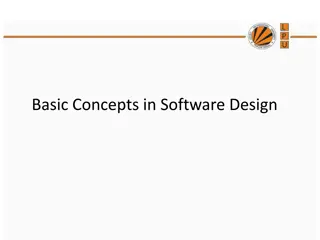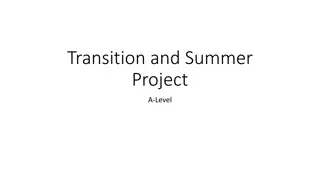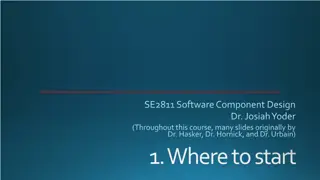AO System Design
The process of using Adaptive Optics (AO) to achieve specific science goals, emphasizing requirement-driven design, optimization, and tradeoffs. Learn to derive AO requirements from science goals and design an AO system to meet performance requirements
Download Presentation

Please find below an Image/Link to download the presentation.
The content on the website is provided AS IS for your information and personal use only. It may not be sold, licensed, or shared on other websites without obtaining consent from the author. Download presentation by click this link. If you encounter any issues during the download, it is possible that the publisher has removed the file from their server.
E N D
Presentation Transcript
Class Projects AO System Design Intro and Overview January 30, 2020 Developed by Katie Morzinski Slide 1
Project in brief 1. Choose an astronomy science question that AO can help to answer 2. Decide on an AO system that will best address your science question Slide 2
We are starting this class project somewhat early in the quarter A trade-off If we wait till you know a great deal about AO, the project ends up due at the end of the quarter, the same time as all your other projects and term papers If we start now, you know less (so far) about AO, but as the class proceeds you will be able to connect the lectures to your project Slide 3
Class project learning goals Content Goals: Process Goals: Using AO to achieve a specific science goal Systems thinking Requirement-driven design How to derive AO requirements from science goal Optimization Relation between image quality and residual wavefront error Tradeoffs Understanding error budgets: specific contributors; AO as a system Slide 4
What you will actually be doing during your project 1. Choose collaborator(s) and a general area of science that you are interested in using AO for 2. Within your collaboration, come up with a specific science case (an investigable science question within your general topic) that benefits from AO 3. Decide upon specific science requirements needed in order for a new AO system to address your science case 4. Flow-down science requirements to performance requirements for your AO system 5. Given your performance requirements, design an AO system (on paper) that meets these requirements 6. Present your design to your peers in class ( Conceptual Design Review ) 7. Synthesis discussion of what we all learned from this process Slide 5
Tentative schedule for class project on AO System Design Intro (today) Starters (February 6th) in class An example of how to choose key AO parameters Focused Investigation (Feb 11th) Group work during class time First draft of Performance Requirements (Feb. 18th) Rest of February: continue working together; move from performance requirements to AO design, via error budget March 5th Conceptual Design Review Group presentations in class March 10th Project Synthesis Slide 6
First tasks: Choose Collaborators, Science Topic, Specific Science Case Item Due date By Feb 6th (or sooner if you wish) Explanation Example General Science Topic and Collaborator(s) Choose broad science area which interests you; find collaborator(s) Frame a specific question that AO can help answer Extrasolar planetary systems Specific Science Case In class on Feb 11th What are spectra of planets in outer parts of other solar systems (distance > 5 AU from parent star) Science requirements for AO system design February 18th Develop AO system performance requirements for your science case Angular resolution Contrast ratio between planet and parent star Wavelength range Enclosed energy Spectral resolution Slide 7
Send e-mails to me max@ucolick.org 1. Today or by Feb 6th at the very latest What broad science area are you interested in? Who is (are) your collaborator(s) ? Put Astro289 in subject line 1. After end of class on Feb 11th (each group together) What specific science question do you want to analyze? How will AO help answer this question? Slide 8
